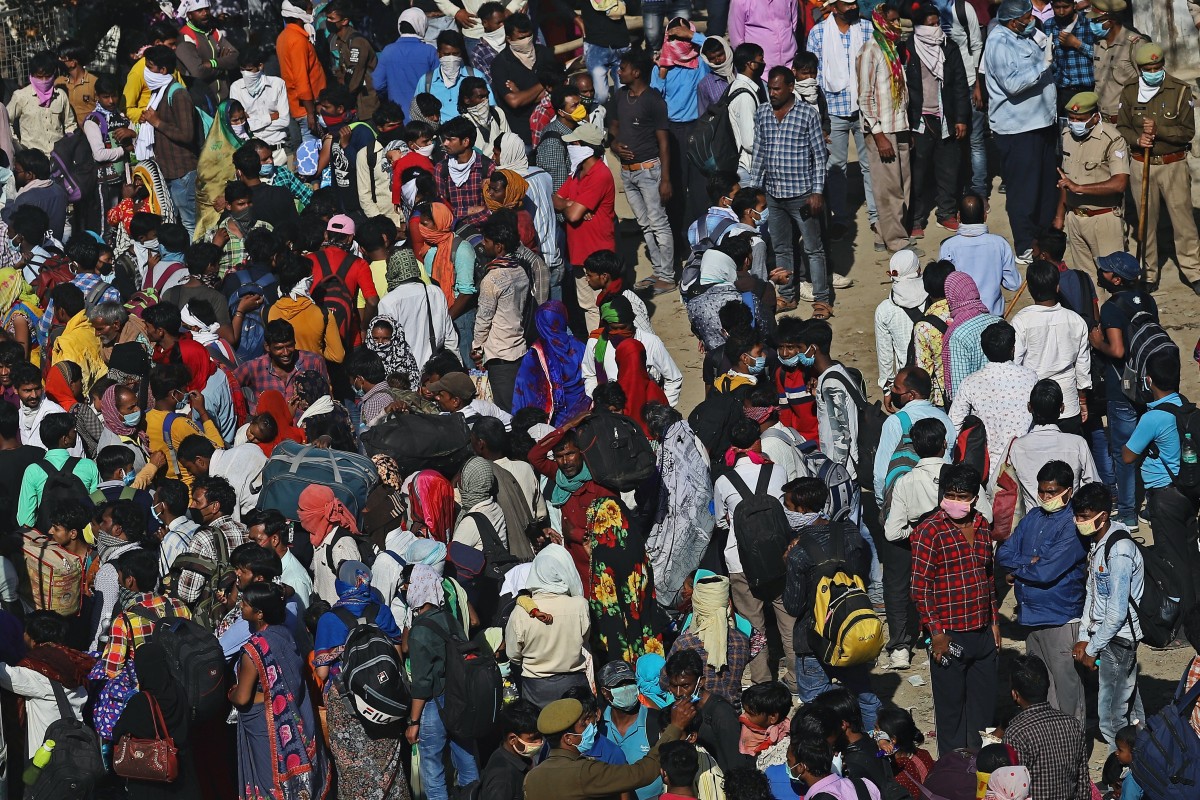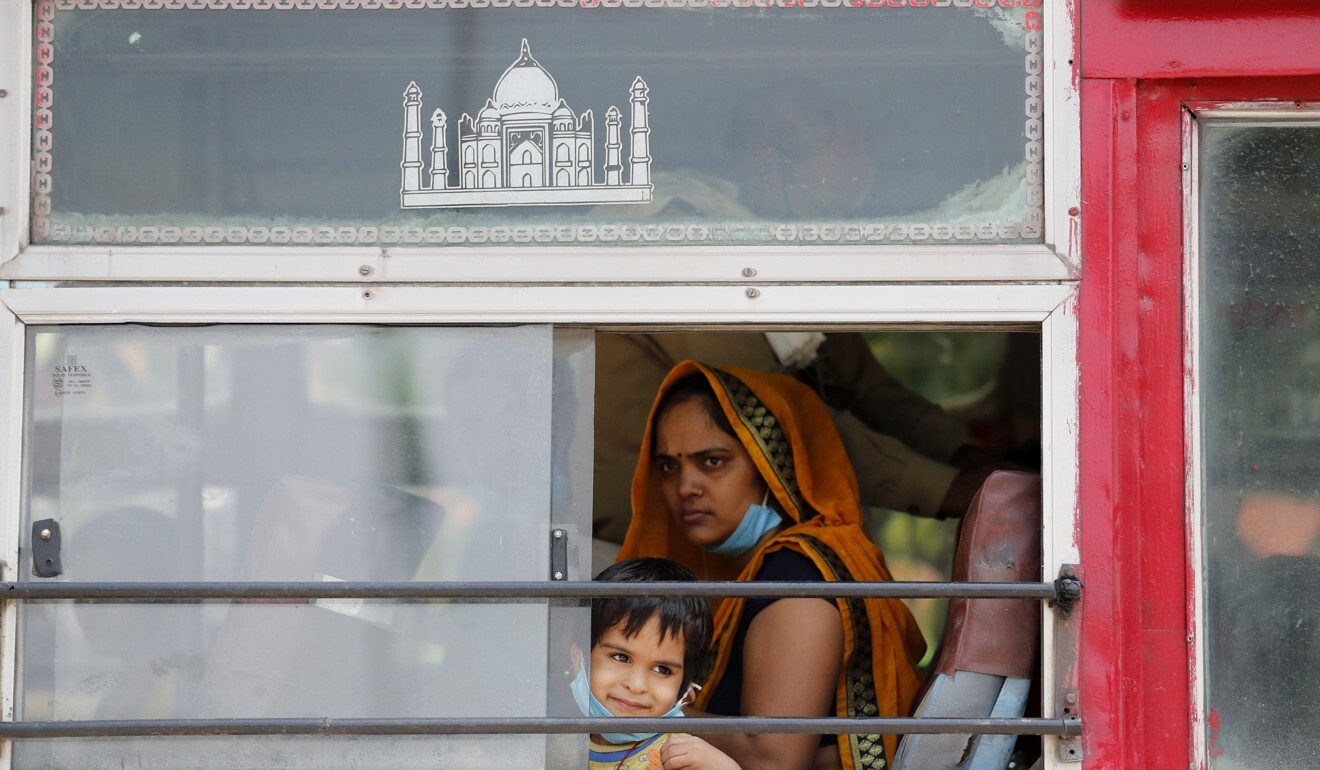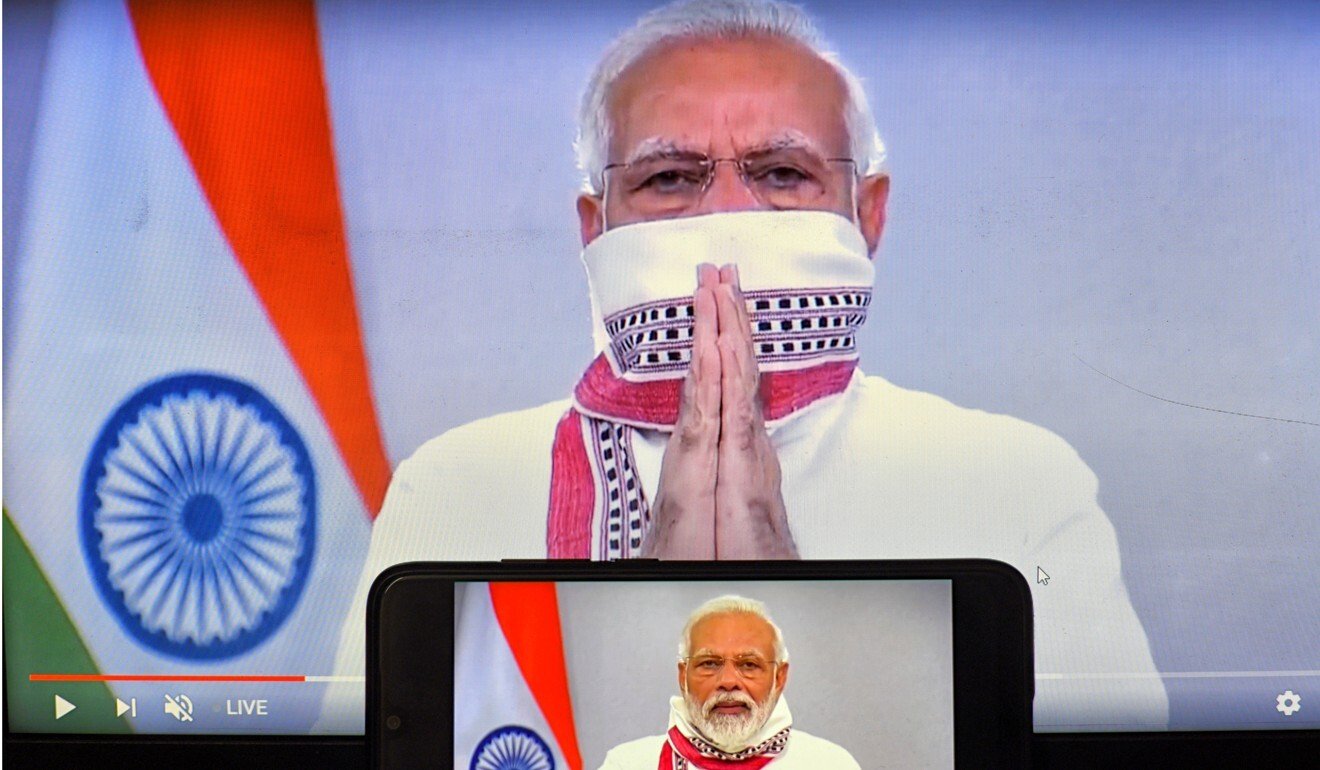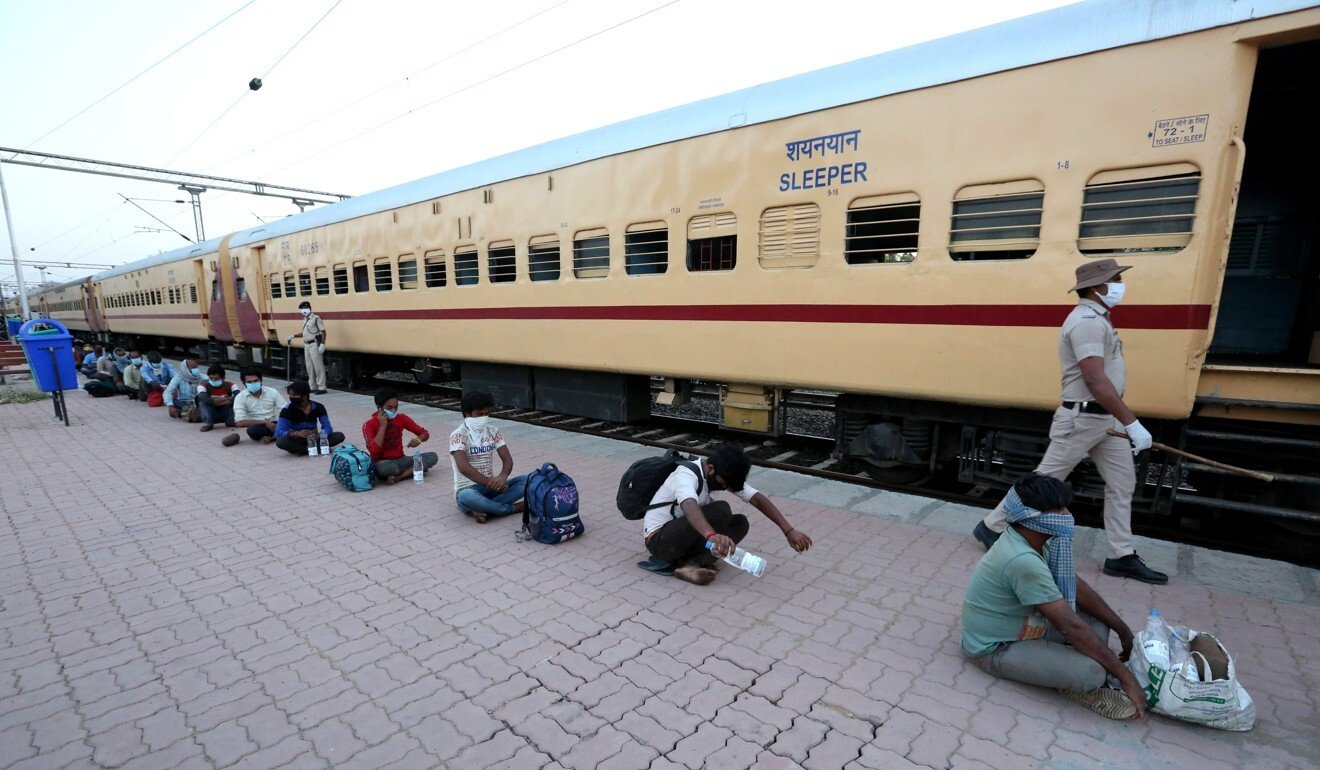- Heart-rending scenes of migrants escaping the cities in a lockdown fail to move the authorities
- The higher-caste policy elite sees only low-borns struggling to survive, and cannot understand the fuss. Isn’t that the natural order of things?

17 May, 2020

All governments like to make pious noises about the poor, democratically elected ones even more so. Even if they are run by elites with little genuine interest in the well-being of the unwashed, they at least put up a show of caring. It’s not just virtue-signalling, it’s survival. Which is what makes India’s handling of the coronavirus lockdown so baffling. The political leadership of the world’s biggest democracy these days doesn’t even pretend that it cares about the poor working class.Ever since Prime Minister Narendra Modi announced a nationwide lockdown at a notice of just four hours in late March, India has witnessed epic scenes of migrant workers fleeing the cities. As livelihoods vanished overnight, millions of casual wage earners have hitch-hiked and cycled, but mostly just walked hundreds of miles to get home, often in other states. Some collapsed on the way and died from the exhaustion. Many have been run over.
Last Friday, 16 migrant labourers were crushed to death by a goods train. They were walking along the tracks and had fallen asleep, exhausted, and had assumed that trains were not running because of the lockdown. On Thursday, eight migrants died when the truck they managed to hitch a ride on collided with a bus. There is no concrete figure of just how many have died so far fleeing hunger while their government says it is trying to protect them from a pandemic. About 100 million people are said to undertake short-term migration annually in India, taking up back-breaking informal work. From brick kilns and spinning mills to agriculture and roadside eateries, lowly paid workers are ubiquitous, yet inconspicuous and unnoted – outside art-house films and lofty editorials. They are not even considered bit players in India’s stunning growth story starring its software engineers and billionaires. The apocalyptic tide of reverse migration and the cruelty of the authorities towards the migrants have triggered outrage and turned the spotlight on them for the first time.
Suddenly forced out of the woodwork by the coronavirus and spilling out on to the highways, the hitherto-invisible migrant worker has been staring out of prime time news at adequately stocked Indians wrestling with the monotony of watching Netflix and working from home. The distress of India’s informal labour has never been more visible. Except to India’s rulers.
What’s killing India’s democracy? It’s not just Modi who’s to blame7 Mar 2020
Theinitial government guidelines on the lockdown did not even mention migrant workers. The federal and most state governments have not bothered with any meaningful plans for them, such as providing regular rations or helping businesses pay their wages. For weeks after the lockdown began, there was no talk of transporting them back to their places of origin. Beyond holding them down in cramped, unhygienic shelters with little or no food and zero or scant allowance, there was nothing. Their dehumanising indignity contrasts with the triumphant return home of another kind of migrant worker, the prized Non-resident Indians (NRIs), and rich students stuck in Covid-hit countries such as China, Italy and Iran, who were evacuated by special flights arranged by the government before the lockdown.

In his five television addresses to the nation on the pandemic, Modi has studiously avoided any mention of the hardships faced by migrant workers, the deaths, or what he planned to do about it. In his latest speech, on Tuesday, he promised a giant financial package for “everybody”, including migrants. Two days later, his finance minister announced, after one-and-a-half months of an unending humanitarian crisis, that they would be given free grains and pulses. But there is still no major relief plan to stem the exodus or provide immediate cash help.
In Modi’s usually lengthy sermons on the need of the hour to “sacrifice” in the “war against corona”, marginal workers for whom the lockdown has been a death sentence are the unspoken collateral damage. In his earlier speeches, Modi advised people to check with their private doctors, a privilege enjoyed by a fraction of Indians; requested them to download a government app that aids contact tracing; and appealed to them to help the poor. In his latest speech, he spoke a lot about “supply chains”. Clearly, he was not addressing the poor.Coronavirus UpdateGet updates direct to your inboxBy registering, you agree to our T&C and Privacy Policy
After more than a month of the lockdown, Modi ordered a military spectacle involving the showering of flower petals on hospitals and cross-country fly-pasts to thank “corona warriors”, while millions of workers waited on the ground below to go home. By now, with stranded workers protesting and rioting in several cities, a decision had finally been taken to use some of the idled trains and buses to transport the workers. But it transpired that the poor migrant workers, unlike the NRIs who the government had evacuated earlier, would have to pay.
With little or no savings, not paid for a month and at the end of their tethers, they would in fact be charged extra for the special service. When it became a political football and the opposition parties volunteered to pay the fare, the southern state of Karnataka simply cancelled the trains. After a meeting with representatives of the construction industry, the state government “decided” the workers needed to stay to restart the economy, whether they liked it or not.

What emerges in all this is an inexplicable pattern of wanton indifference to the poor by a government that happens to depend on their sizeable vote. India’s rising economic prowess notwithstanding, the world’s fifth-largest economy remains a highly unequal society, with the richest 5 per cent controlling about 70 per cent of the wealth. India has halved its poverty rate in 10 years from 55 per cent to 28 per cent. An impressive feat, but that still leaves the country with more than 365 million poor people. And escaping poverty is not an irreversible condition. Just as millions move up in life, many fall down. Some 55 million Indians are pushed into poverty every year by high medical expenses alone.
In India, blood flows on campus as Tiananmen Lite meets Democracy Lite7 Jan 2020
Also, those who are not “poor” are not necessarily rich or middle class. In fact, some income segments broad-brushed as “middle class” in India could well be considered poor or near-poor elsewhere. If “middle class” is defined as those making more than US$10 a day, for example, less than 2 per cent of Indians would qualify, by some estimates. But if it is set at US$2 a day – just above the international poverty line of US$1.90 – a whole range of casual wage earners from domestic helpers to construction workers would qualify as middle class, even though their lifestyle is closer to that of the poor.
The long and short of it is that the poor are still a numerically significant group, which no government in a competitive political system would dare risk aggravating by treating them like dirt. But the saga of migrant workers in the lockdown confirms what Indians have known forever – that apart from their vote, the poor do not count for much. Come elections, they are to be wooed with freebies and special policy announcements, and packed into buses and trains, paid and fed to attend rallies, then cast aside till the next election. For one rally before the 2019 national elections, the ruling Bharatiya Janata Party hired four trains and 2,500 buses to ferry warm bodies from the countryside to fill a Modi rally in the eastern city of Kolkata, a fairly common practice cutting across party lines. The poor now having to walk from the cities to their villages is testimony to how they are treated between elections.
In their opportunistic social distancing of the poor, the ruling classes channel a widespread antipathy to the weakest sections of the population. Class alone does not explain this aversion. It lies in India’s age-old social hierarchy of caste.Economic progress, affirmative action and political mobilisation have loosened some of the old social rigidities. Middle castes – such as the one Modi himself comes from – in particular have made impressive gains. But the structural impediments for the lowest castes in the Hindu hierarchy (known as Dalits) and forested tribal groups (called Adivasis) to move up in life continue to be formidable. A high degree of overlap between caste and class persists. And it is not accidental.
Poverty is prevalent in higher castes as well, but much more so among the Dalits and Adivasis, who constitute the majority of migrant workers.
On the other hand, the structures of power, from the higher bureaucracy and boardrooms to newsrooms and the judiciary, are all overpoweringly upper caste. Generations of privilege, head start and social capital coalesce to put them ahead in a playing field that the upper-caste state is either unable or unwilling to level by providing basic services, such as education and health care, to all. The economic and social gradations hence tend to self-perpetuate, with the lower castes gravitating towards menial jobs, the higher castes filling the white-collar ranks – and so the ancient, hereditary hierarchy of labour endures.
People in India are the least likely among large developing countries to break out of the education and income bracket they are born into, their income being more dependent on their parents’ income and education than in peer countries such as China and South Africa, according to a World Bank study. A separate study by the World Economic Forum ranks India at a lowly 72 out of 82 countries in its Global Social Mobility Report. It takes seven generations for a member of a poor Indian family to achieve average income, compared with Denmark, where it takes one. Caste is at the root of this restricted social mobility, as is the lack of mobility-enabling factors such as health care, education and work.

In the last election, Modi projected himself as the chowkidar (Hindi for watchman) guarding the nation and the people. The metaphor of chowkidar perfectly blended in it the image of a strong leader and protector with the humble, low-paid everyman guarding homes and offices. All his party leaders rushed to declare themselves as chowkidar, prefixing it on their social media handles. There was one notable exception – Subramaniam Swamy. A parliamentarian and Harvard economist, the straight-talking Swamy made it clear that he could not call himself a chowkidar for the simple reason that he was a Brahmin, the highest caste of priests and scholars. “I’ll give directions and chowkidars have to do it,” he told a TV channel. That, in a nutshell, is the hereditary chain of command of the Indian economy, which is essentially controlled by the top three castes.
Upper-caste households earn 47 per cent more than the national average, while the Dalit and tribal households earn 21 per cent and 34 per cent less than the average. Like privilege, poverty, too, is hereditary, often chronic. Some 40 per cent of the poor tend to remain poor, making some 111 million Indians, a tenth of the population, “chronically poor”. This “stickiness” of poverty creates a high degree of tolerance for it, as it is not seen as a governance failure, but as a fait accompli. Plain bad luck. Accident of birth.
Poverty is sticky – in fact increasing – because the state has failed to universalise the tools necessary to escape it. Land, education, health care and service delivery are all tied to pre-existing caste privileges. Especially so in the villages, where 70 per cent of India lives, and where one’s caste can determine how far one has to travel to fetch water. In fact, how far one will go in life.
The outrage over the migrants’ struggles to get home misses a far bigger scandal of how they got to work – a journey of systemic exclusion from the means of equalising life chances that turns people into destitute workers, a journey that long predates the lockdown.
THE JOURNEY
Let’s start with land, where that journey begins. The pattern of land distribution broadly reflects Hindu caste hierarchy. Large landowners tend to be upper caste, medium-sized landowners who cultivate their own lands belong to the middle castes, and the Adivasis and Dalits are mostly landless or have small holdings. About 80 per cent of the agricultural land is operated by upper and middle castes.Overall, 10 per cent of Indians control 55 per cent of land, while 60 per cent own just 5 per cent.Before they industrialised, Japan, South Korea and Taiwan underwent rigorous land reforms that redistributed income, boosted domestic demand and fostered the political stability sought by investors. In India, land reforms remained patchy because of the resistance of the political and bureaucratic classes, drawn from the same castes as the landed gentry. According to the last census, some 56 per cent of rural households, or about 500 million Indians, are landless.
Modi thinks he is Xi Jinping, but protests show India is not China17 Feb 2020
Owing to their land holdings, high-caste Hindus constitute 22 per cent of the population but hold more than 40 per cent of the country’s total wealth, the middle castes about 31 per cent, and the Dalits and Adivasis together own just 11 per cent, even as they constitute 27 per cent of the population. The UN estimates that half of all tribal people in the country are poor, as are a third of the lowest castes and a third of Muslims, compared to just 15 per cent of the upper-caste Hindus. Tribal groups are particularly land-stressed as they are being increasingly forced out of their habitats because they happen to inhabit most of India’s mineral-rich regions that are appropriated to fuel economic development.
In a country where agriculture still employs more than half the labour force, it helps to own land, naturally. As the economy evolves, however, so do other forms of occupation. But uneven access to health care and education keeps them out of reach for those at the bottom of the social hierarchy. Adivasis, Dalits and Muslims, for example, suffer poor health, have relatively low access to health care compared to higher-caste Hindus, and die earlier. The mean age of death for tribal people, who are the poorest, is 43 years, in a country where the average life expectancy is 70. Since India spends a pitiful 1.28 per cent of the GDP on health care, its public health care system in most states is broken. Decent health care is entirely a function of individual resources, giving upper castes a better shot at life.
In education, abysmally low public spending and the increasing role of private capital mean that while the poor are driven to low-quality state institutions, the middle and upper castes and classes can buy quality education. The disparate academic exposure of the two groups cements the disparity of their life choices.
Three-fourths of the 6 million children currently out of school in India are either Dalits (32.4 per cent), Muslims (25.7 per cent) or Adivasis (16.6 per cent). For those who make it to school, the children of the poorest and low-caste families fill the rosters of government elementary schools while private school enrolment remains biased towards upper-caste and urban children.
As the wider social exclusions are carried over into the classroom, children from the marginalised social groups are often subjected to humiliation by both teachers and other students. Driven to government schools by poverty, the poor and the marginalised are often driven out by poverty and discrimination in the classroom. As a result, while overall enrolment has increased substantially in recent decades, the dropout rates are far higher for these groups. Those who stick it out despite the odds, learn little. Surveys find one in four rural Indians aged 14-18 cannot read a text in their own language meant for children aged 5-7 years.
The vicious circle of poverty, poor education and low social standing is reinforced by the absence of a vibrant manufacturing sector that could have soaked up the landless and surplus agricultural labour. India never saw the kind of state-led strategic industrialisation that resulted in the East Asian miracle and, later, China’s turnaround. Large supplies of low-cost surplus labour from the farm sector fed the process of sustained industrialisation that – along with huge state investments in health care, education and other basic services – transformed these economies, generated jobs and spread prosperity.
India missed the entire, intermediary step of manufacturing-led growth in its economic evolution when it opened up in 1991, going from an economy driven by agriculture straight to one led by services. The resultant impact on jobs has been disastrous as only a small section, the English-speaking professional middle class with access to good education – largely higher castes – can be absorbed in the service sector. For the rest, manufacturing would be the only avenue of economic advancement. But the historically small role of manufacturing in India has meant that the major part of the labour force has been deprived of gainful opportunities and the manufacturing-induced generational progress witnessed elsewhere in Asia.
This void has created a giant pool of desperate, cheap workers, who are preyed on by the informal sector that generates more than 80 per cent of non-agricultural jobs, often to the point of slavery by way of debt bondage. The Global Slavery Index estimates more than 8 million Indians live in a state of modern slavery, the highest in the world. Millions of others find themselves trapped in subsistence wage labour.
Labour distress starts to manifest early. There are more than 10 million child labourers, says the latest census. Surveys find most of them tend to be from the lowest castes and tribes. They also get the worst jobs, such as rag picking, and are denied the slightly “better” jobs such as working at eateries because of traditional notions of “impurity” and “untouchability” associated with the lowest castes. This caste-driven work allocation continues to stalk them for the rest of their lives, even when they migrate. The more skilled and better-paying jobs go to the higher castes, with better social networks in the city, giving them a far better chance of escaping poverty.
Modi’s surgical strike on Muslims puts India at war with itself17 Dec 2019
Poorly administered laws allow these predatory labour practices even in the formal sector, which has increasingly been hiring on an informal basis. This month, many of the country’s labour laws were abolished in several states, where manufacturers can now legally ask workers to do 12-hour shifts or can even do away with minimum wages and the obligations to provide ventilation, toilets and breaks. The state’s response to a heightened crisis of distressed labour is taking away whatever little right labourers still have. As we were saying, the state doesn’t even pretend to care any more. It would, if it saw these people as its own, or knew what it means to walk in their shoes. An essay in The Atlantic this month argues the United States was treating the coronavirus as an emergency till the white political and business elite found out it was killing disproportionately more black and Latino frontline workers, at which point they started lobbying for easing the restrictions.
That more Americans were dying became less important than who was dying because of the intertwining of labour and race.
In India, where labour and caste are similarly entwined, one can see the same dynamic when it comes to what economist Guy Standing calls the “precariat”, the most precarious of all labour.
When India’s higher-caste policy elite look at migrant workers trekking the highways, they see low-borns struggling to survive, and cannot understand what the fuss is about. Isn’t that the natural order of things? This is a “war” against the coronavirus, and, like in all wars, not all soldiers are equal. ■
Debasish Roy Chowdhury is a Senior Research Fellow at the Sydney Democracy Network, The University of SydneyHelp us understand what you are interested in so that we can improve SCMP and provide a better experience for you. We would like to invite you to take this five-minute survey on how you engage with SCMP and the news.
Kashmir water market stays afloat despite India’s nationwide coronavirus lockdown

Debasish is a Jefferson Fellow and winner of multiple Hong Kong News and SOPA awards. He has worked and lived in Calcutta, São Paulo, Hua Hin, Bangkok, Beijing, and Hong Kong.
